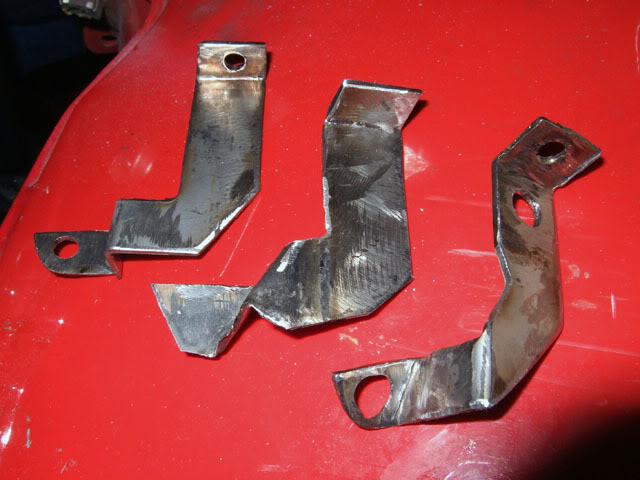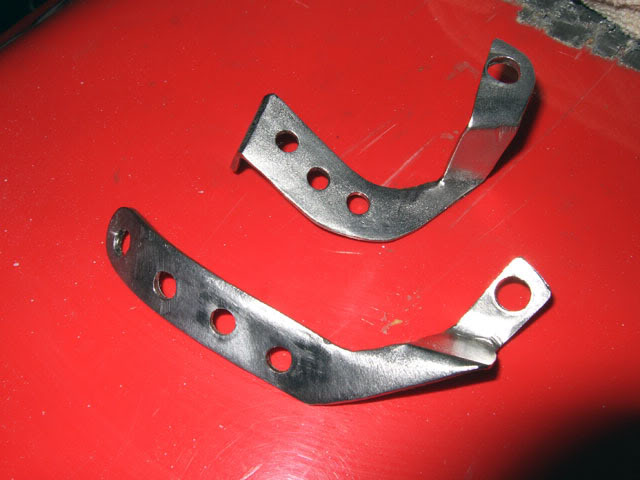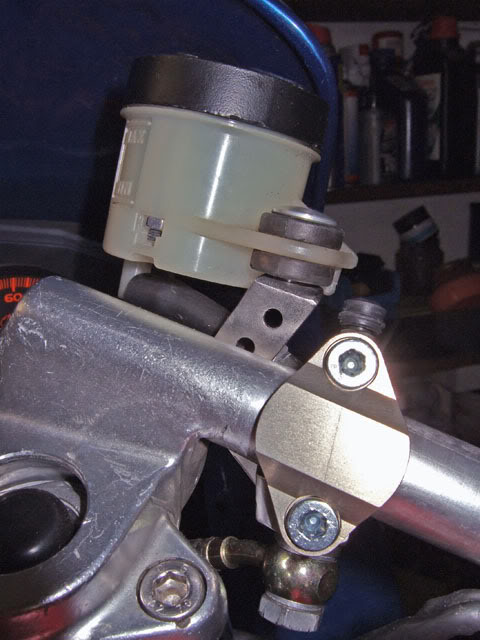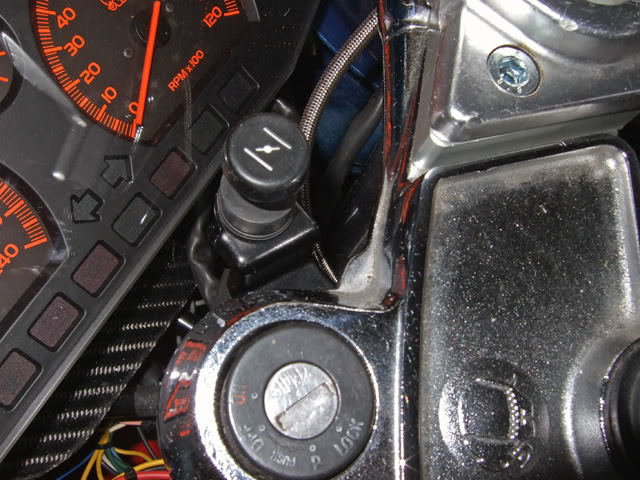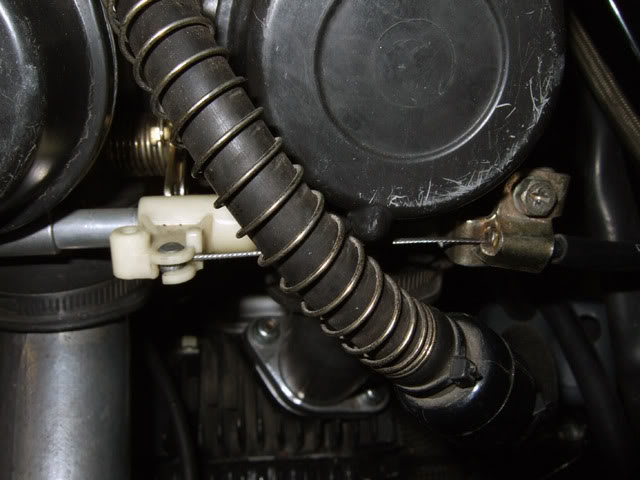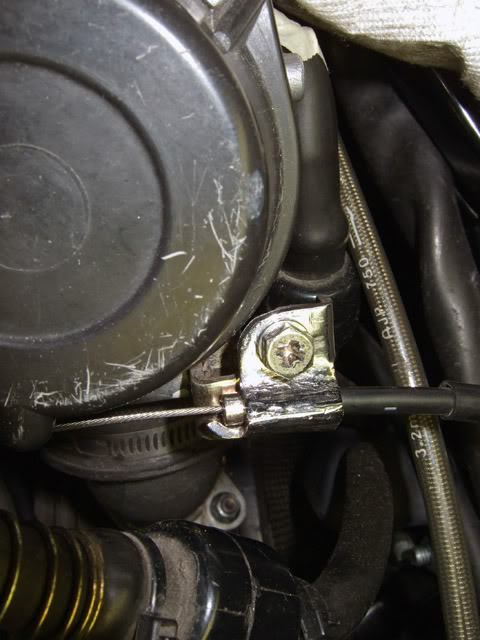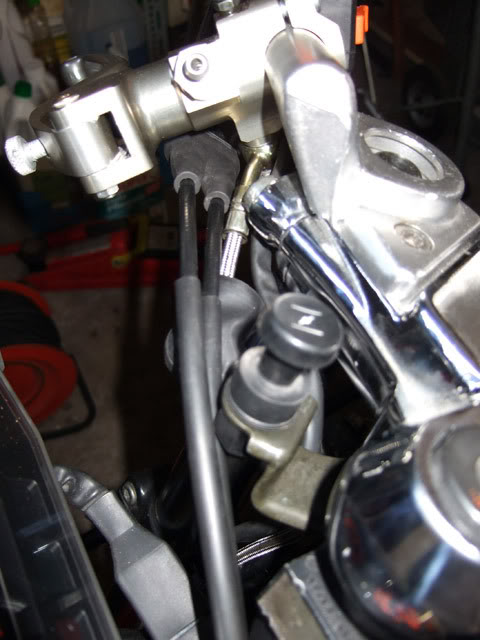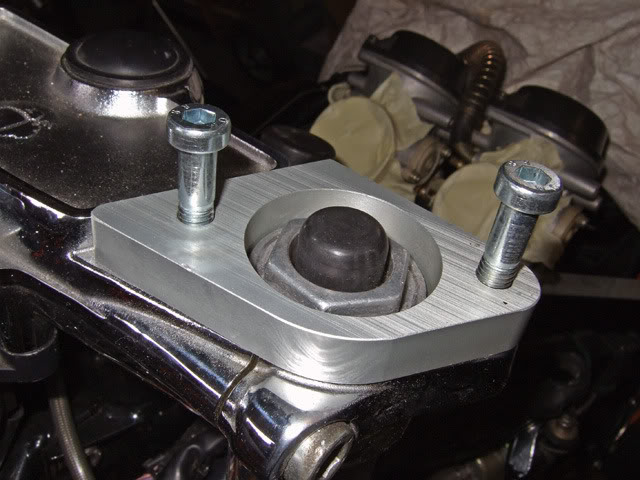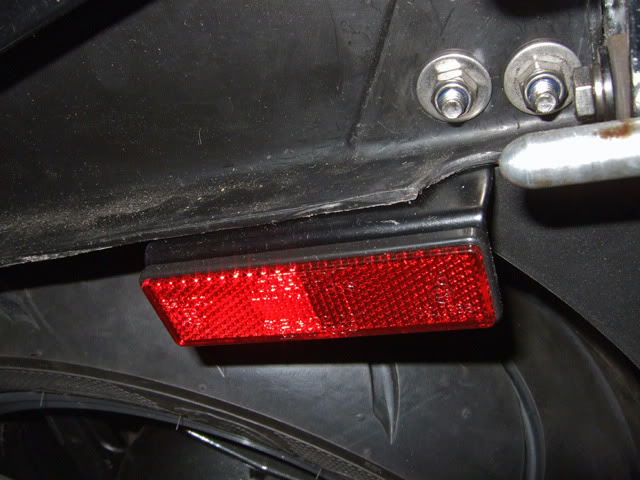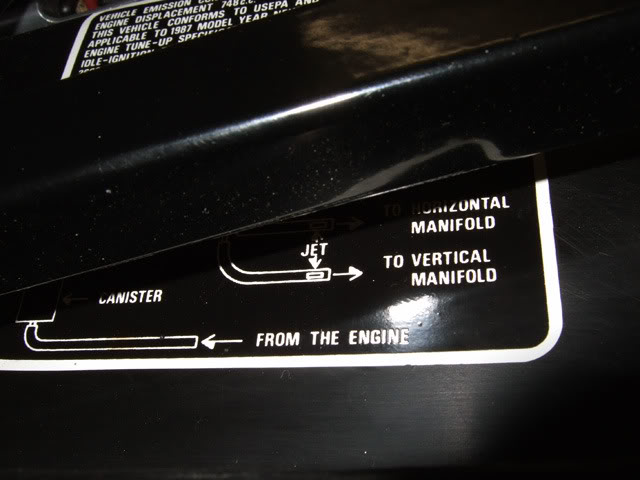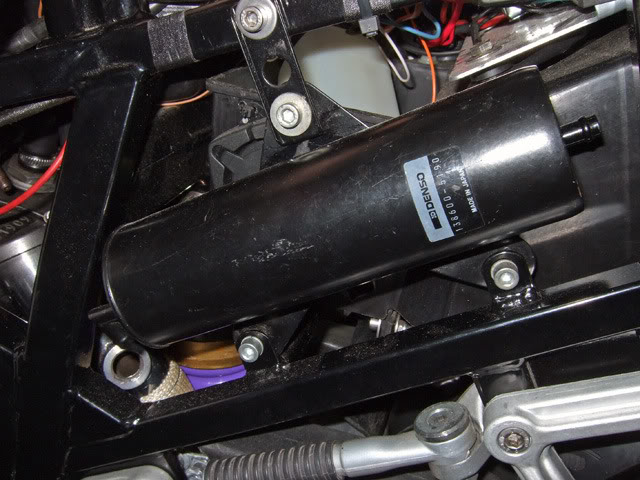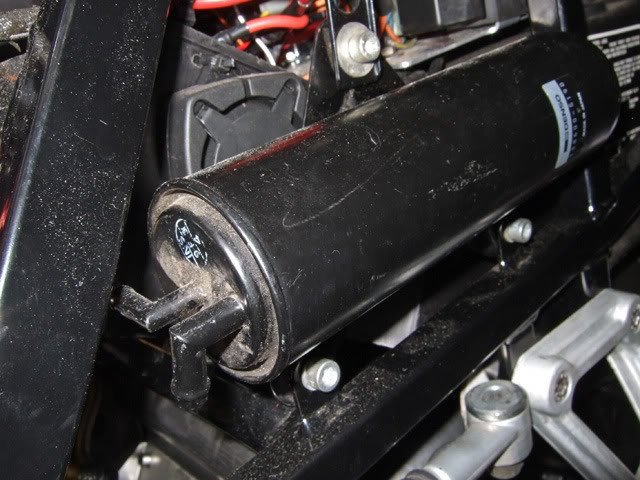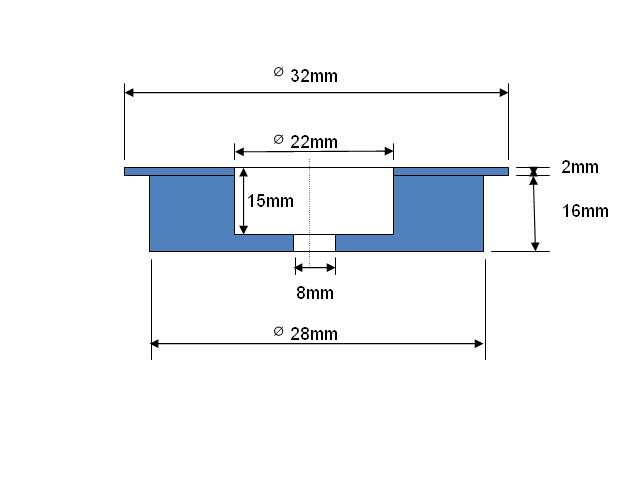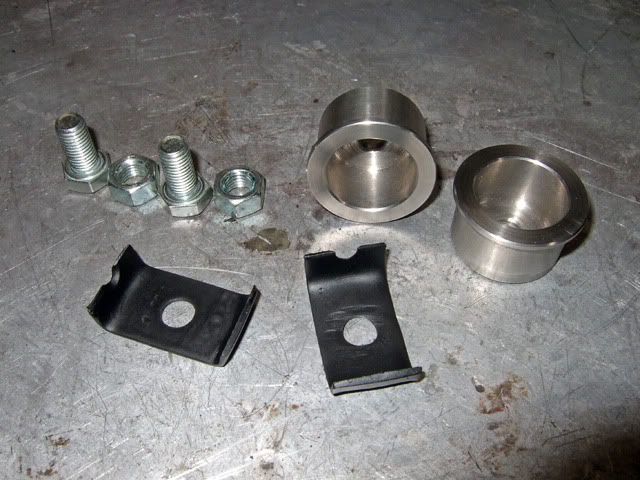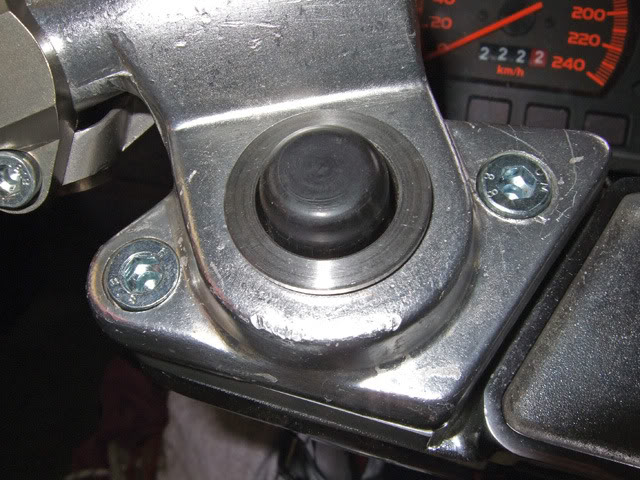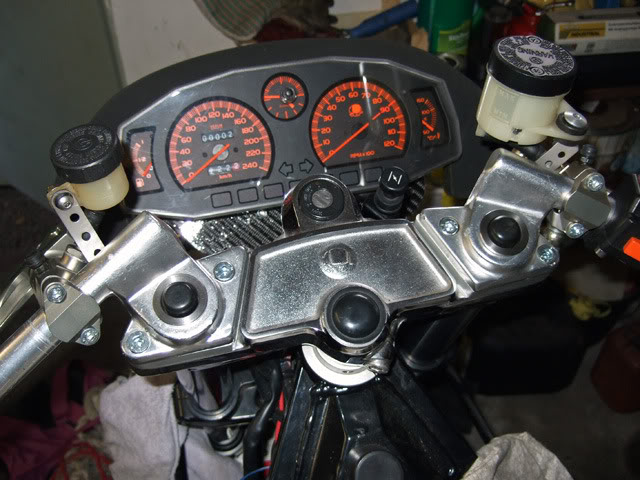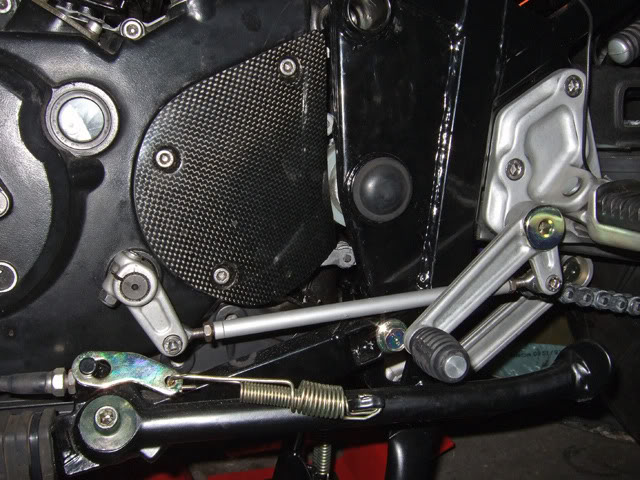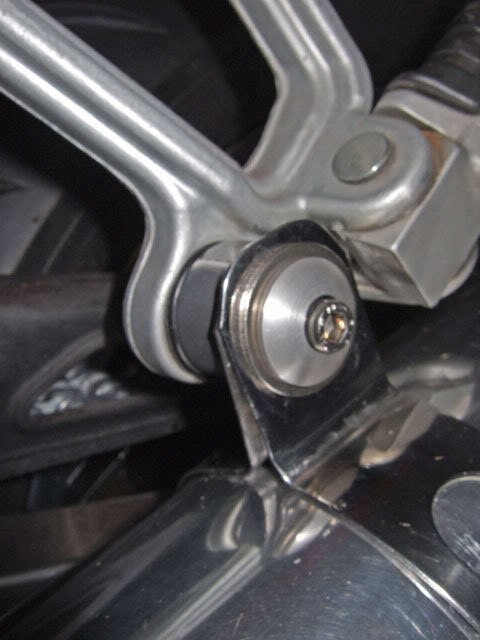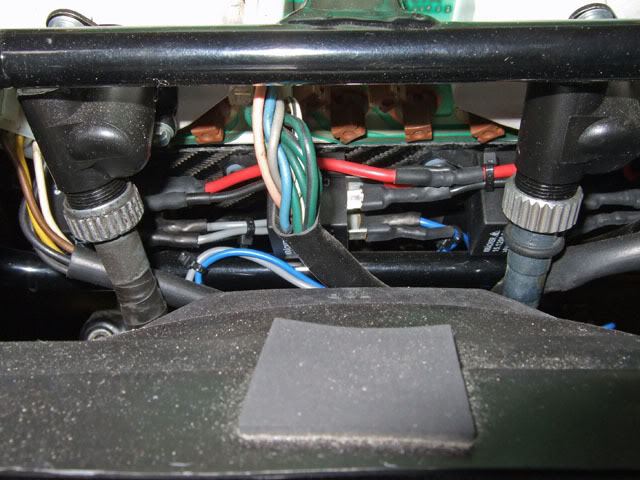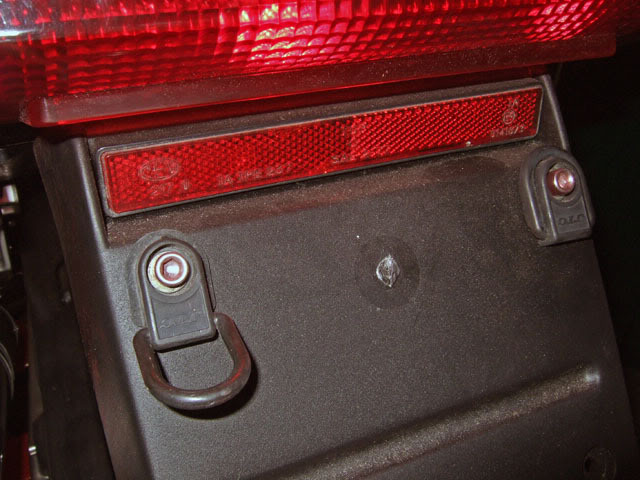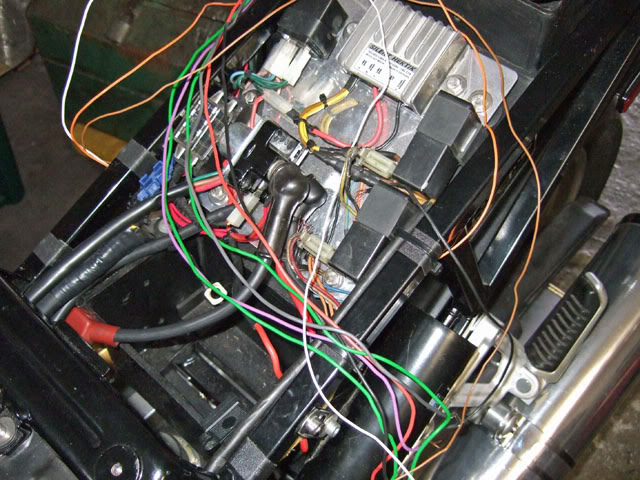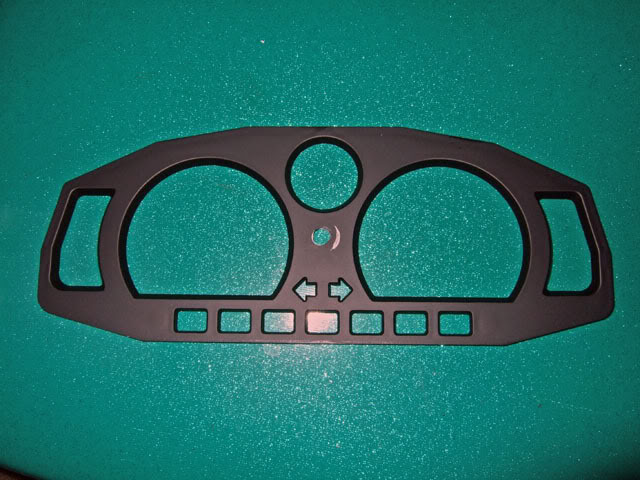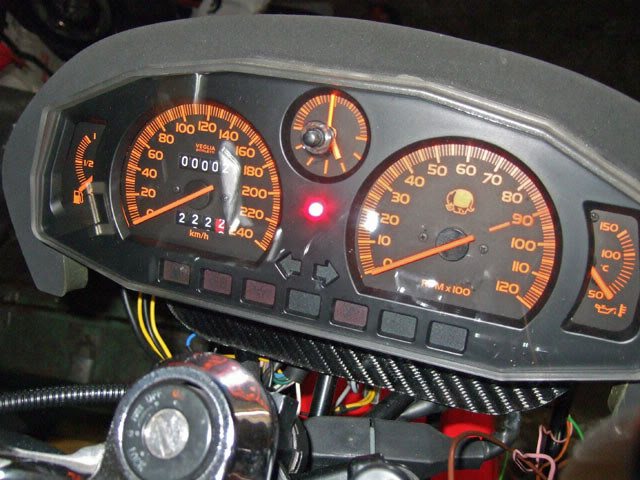I finally got to work a little on the bike again.
Wanted to make a case saver from a 1,5 or 2mm sheet of stainless steel, but there`s not enough clearance between front sprocket and engine housing due to the additional offset of the sprocket. There`s more clearance when it`s at its original position.
Pity, but one less thing to do.
So I could take care about some small things like mounting the exhaust.
I do have much nicer cans, but unluckily they need to be road legal

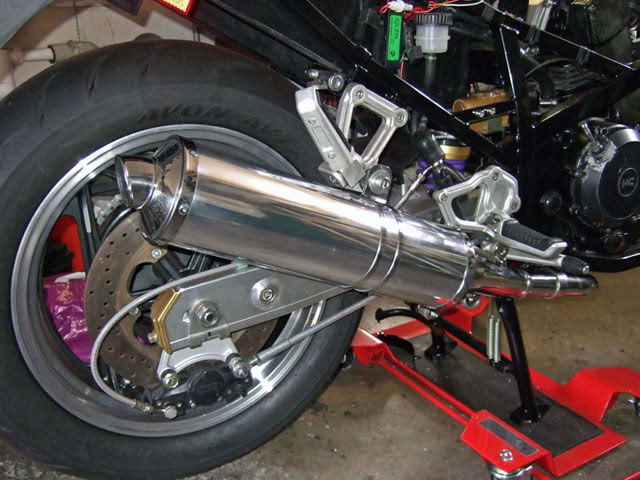
Why can`t they make cans that run parallel to the bike ?

Another thing to correct in the future.
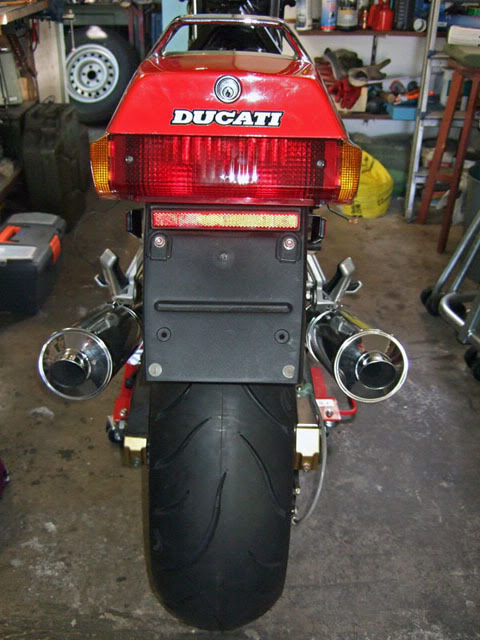
As the original exhaust to footpeg mounts have a very nice design I don`t like this at all. Guess I will have to get something made that hides the big bolt a bit and looks slightly more like the original setup. This looks cheap. (... yes, I know what you`re thinking). That on the footpeg hinge is grease, not rust btw

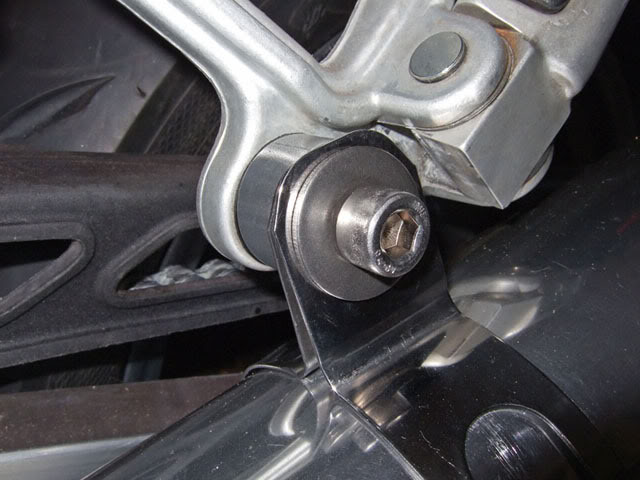
Today my new (used) ss brake line arrived so I could tighten all connections, bleed brakes and clutch (love the bleeding valve on the pumps) and change the fluid container covers by some aftermarket ones. The longer line (rear brake line of an Aprilia Pegaso, 107cm) was required due to the clutch pump having the connection on the bottom, not at the front end of the pump. Except to the rear brake line all ss lines on the bike have no heatshrink tube cover. Without it the mesh of the lines catches all the dirt so they were covered with a slotted flexible tube. This should also prevent the lines from scratching the paint or frame. Brake lines without heatshrink tube cover can work like a rasp.
Does anyone know btw if the banjo bolt on the clutch cover also has a rubber boot like the brake/clutch pump ? (Anyone have a spare?)
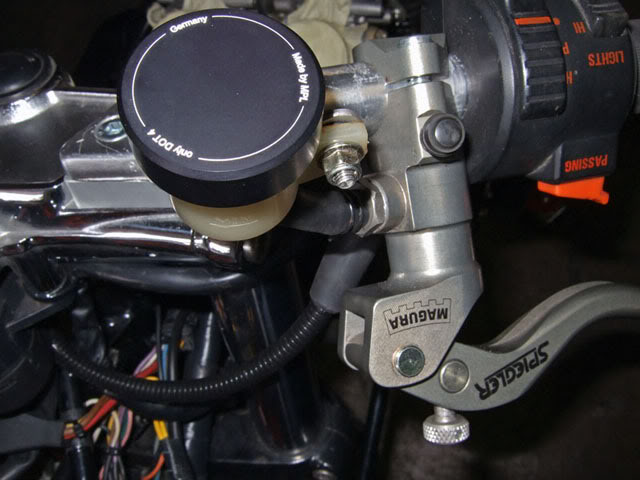
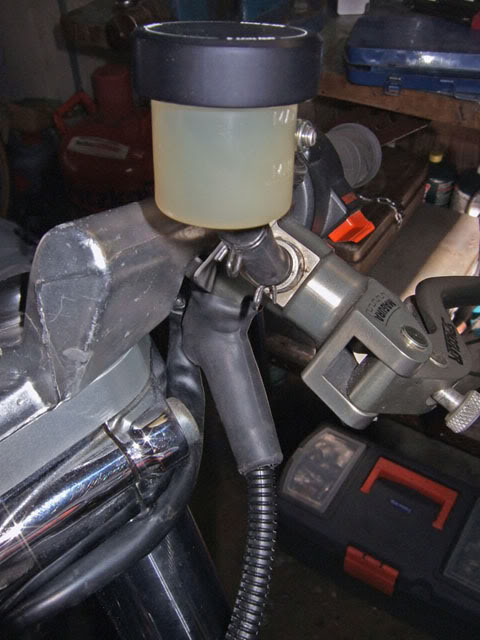
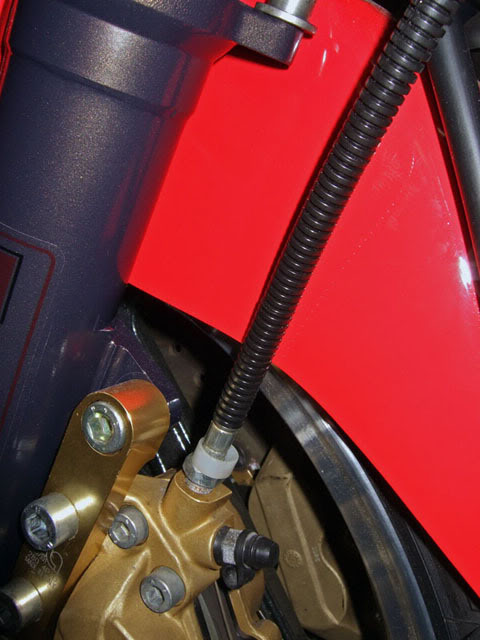
After the discussion about thicker starter and battery cables some months ago I had made my own in 16mm² just to see if there is a difference. I used 8mm² wires before for years (which from electrical standpoint are sufficiant. It`s less changing the cables with thicker ones than replacing the old oxidized cables and connectors with new and properly made ones ... yes, I`m stubborn

). I have to say I never had a problem starting. At the very beginning only. After going through the wiring, doing the relais mod, getting Mikunis and stronger coils the bike would always start at the first rev. Actually it started better than my neighbours Transalp. It hardly ever turned more than twice to start even after standing longer time or at colder temperatures. This may sound like an exaggeration, but it`s not. Therefore my skepticism towards this. IMHO if one has to crank several times to start the bike getting more juice to the starter won`t make the bike start much faster. The starter will turn stronger and faster, yes. But proper ignition and carburation are more important at this point. (btw. considering everything is fine and there`re still starting problems specially with a cold engine the pick-up clearance can be reduced by 0,2-0,3mm. If the problems are in the high revv range you can increase the gap by the same amount. Standard clearance should be 0,7-0,8mm. When cranking the pick-ups should output 0,5-0,6V and at idle 1,6-1,9V if anyone needs this info)
Back to the cables. They were properly crimped (not squashed) with goldened connectors. The tips are soldered to seal the ends. After adding a strain relief the cables were covered with heatshrink tube. If you want to make some yourself and don`t have the crimping pliers just go to a car stereo shop with your old cables and have them make new ones. It won`t cost much. (beware the cables may be a little bit longer, but shouldn`t be any shorter!)
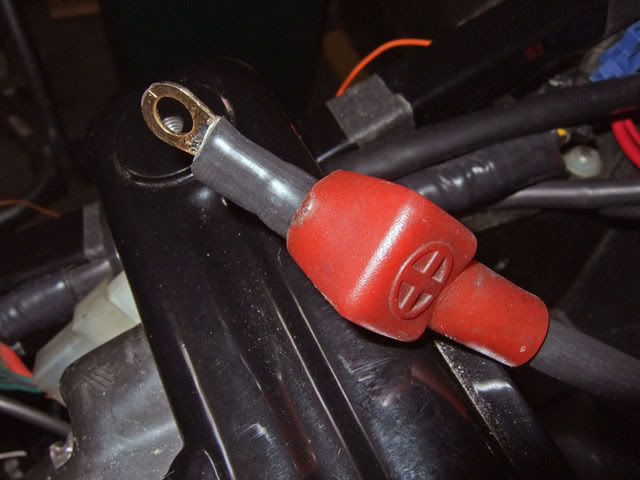
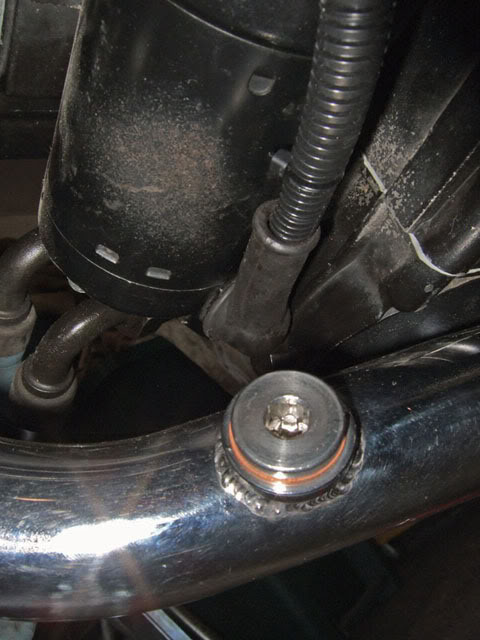
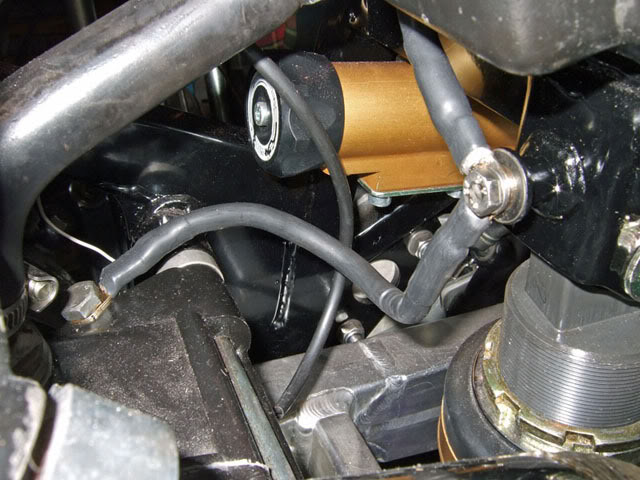
The good, old Silent Hektik regulator. Meanwhile there are cheaper options on the market...
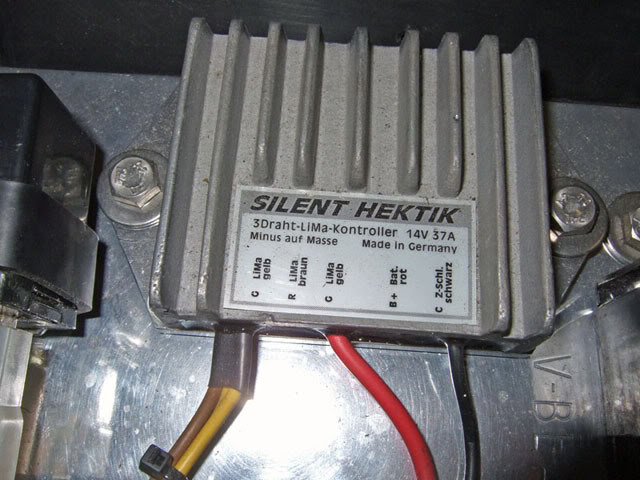
G.


